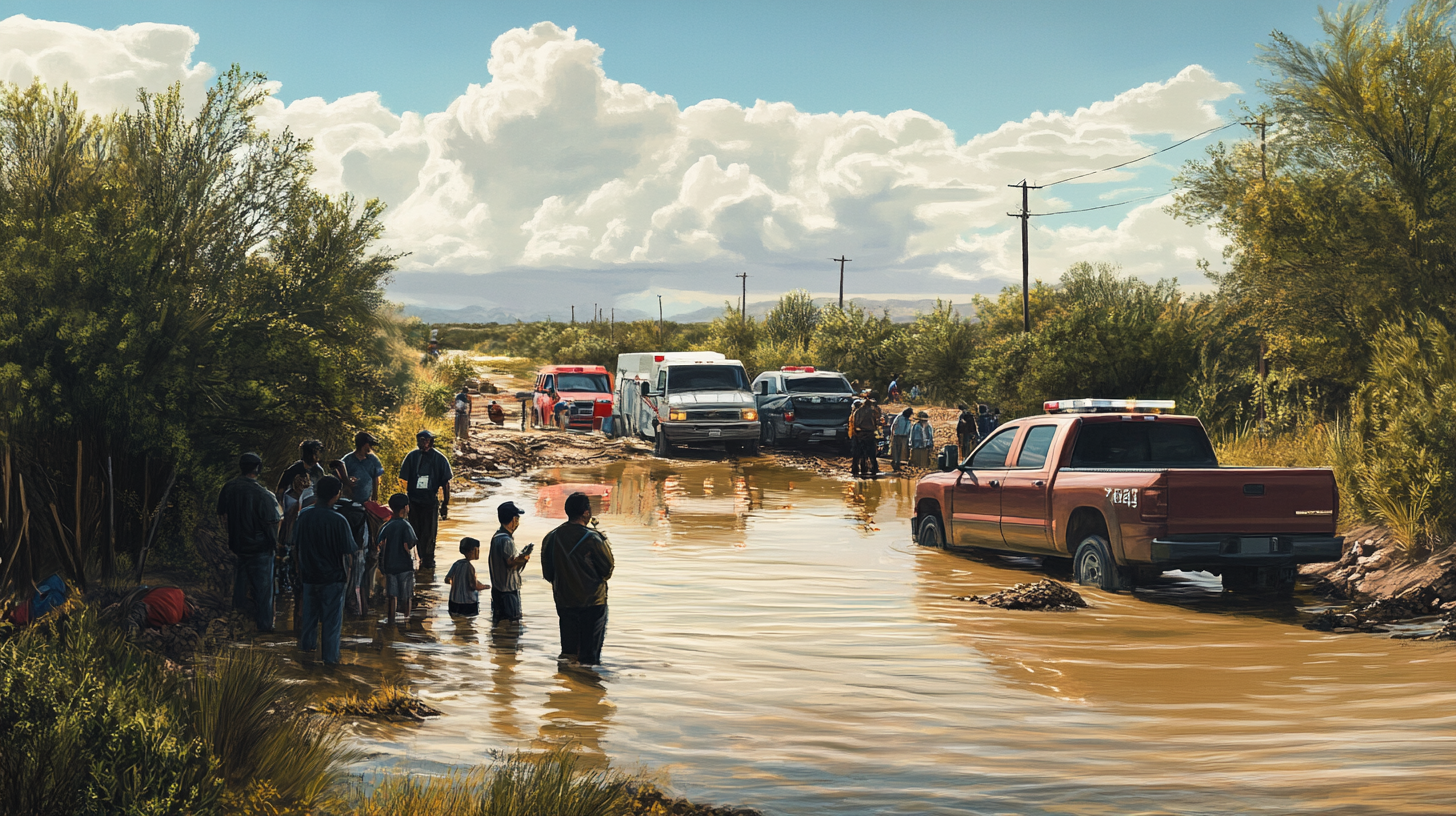The Flood of the Century: San Benito Struggles in Wake of Devastating Deluge
The Rio Grande Valley is grappling with the aftermath of a fierce weather event, known as “The Flood of the Century,” which drenched the San Benito area with unprecedented rainfall between March 27 and 28. This severe weather phenomenon delivered an overwhelming 18 to 23 inches of rain, breaking historical records and leaving a trail of destruction in its wake.
Historical Rainfall and Its Destructive Path
As floodwaters surged through the Valley, communities from San Benito to Harlingen were particularly hard hit. According to the National Weather Service Brownsville/RGV, the Arroyo Colorado crested at a staggering 30.44 feet, eclipsing the previous record set in 2010. Fierce runoff ravaged downtown Harlingen, submerging streets under waist-high water and causing significant damage to infrastructure, including at least 1,000 buildings and an equal number of vehicles across the region.
Alejandro G. Leal, a resident of the low-lying Green Valley Farms near San Benito, witnessed the flood’s impact firsthand. Despite his efforts to elevate his home above county code standards, Leal’s property succumbed to the floodwaters, resulting in the tragic loss of livestock. “We thought we were prepared, but this flood was unlike anything we’ve seen before,” he lamented.
Addressing Long-standing Drainage Issues
For many Valley residents, this disaster has highlighted enduring concerns over inadequate drainage systems, particularly in areas like Green Valley Farms. Locals describe the subdivision as a natural basin that collects runoff from higher surrounding areas, exacerbating flood conditions. Frustrations are running high as calls for more effective flood management grow increasingly urgent.
J.V. Garcia, a civil engineer and an advocate for a systematic approach to flood control, emphasizes the lack of unified drainage planning across the Valley. “We have a patchwork of drainage systems that don’t function cohesively,” Garcia explained. He proposes the formation of a Rio Grande Valley Flood Control District that would standardize and manage drainage efforts across municipal boundaries, mitigating the risks of such catastrophic flooding in the future.
Community Efforts and Government Action
In the immediate aftermath of the flood, Governor Greg Abbott declared a disaster in affected counties, prompting urgent action at both state and local levels. The Federal Emergency Management Agency (FEMA) has conducted preliminary damage assessments, laying the groundwork for a potential Federal Disaster Declaration to secure much-needed federal aid.
Local authorities have moved swiftly to support recovery efforts, with the City of San Benito and Cameron County waiving permit fees for flood-related repairs. “It’s a small step, but an important one to ease the burden on families striving to rebuild,” said Cameron County Judge Eddie Treviño, Jr.
A Call for Resilience and Preparedness
For Valley residents, the flood has underscored the critical need to balance immediate recovery efforts with long-term planning. While emergency measures and community support offer hope, there is a growing consensus that more robust infrastructure improvements are essential to guard against future weather extremes.
Reflecting on potential strategies, Leal remains cautiously optimistic about the future. “We need a collective commitment to invest in our community’s resilience,” he argued, suggesting initiatives such as improved county building codes, annual infrastructure maintenance, and strategic land use planning.
Charting a Path Forward
As the aftermath of “The Flood of the Century” reverberates through the Rio Grande Valley, it serves as a poignant reminder of the urgent challenges posed by climate change and urban development on vulnerable landscapes. The disaster has catalyzed discussions on regional cooperation, resource allocation, and proactive resiliency, all of which are pivotal for the Valley’s sustained growth and safety.
For more information on recovery resources and upcoming public forums, residents are encouraged to contact their local municipal offices or visit the Cameron County website. As the community bands together to navigate these turbulent times, the resilience and solidarity of the Valley’s spirit shine through, charting a hopeful path toward recovery and renewal.







